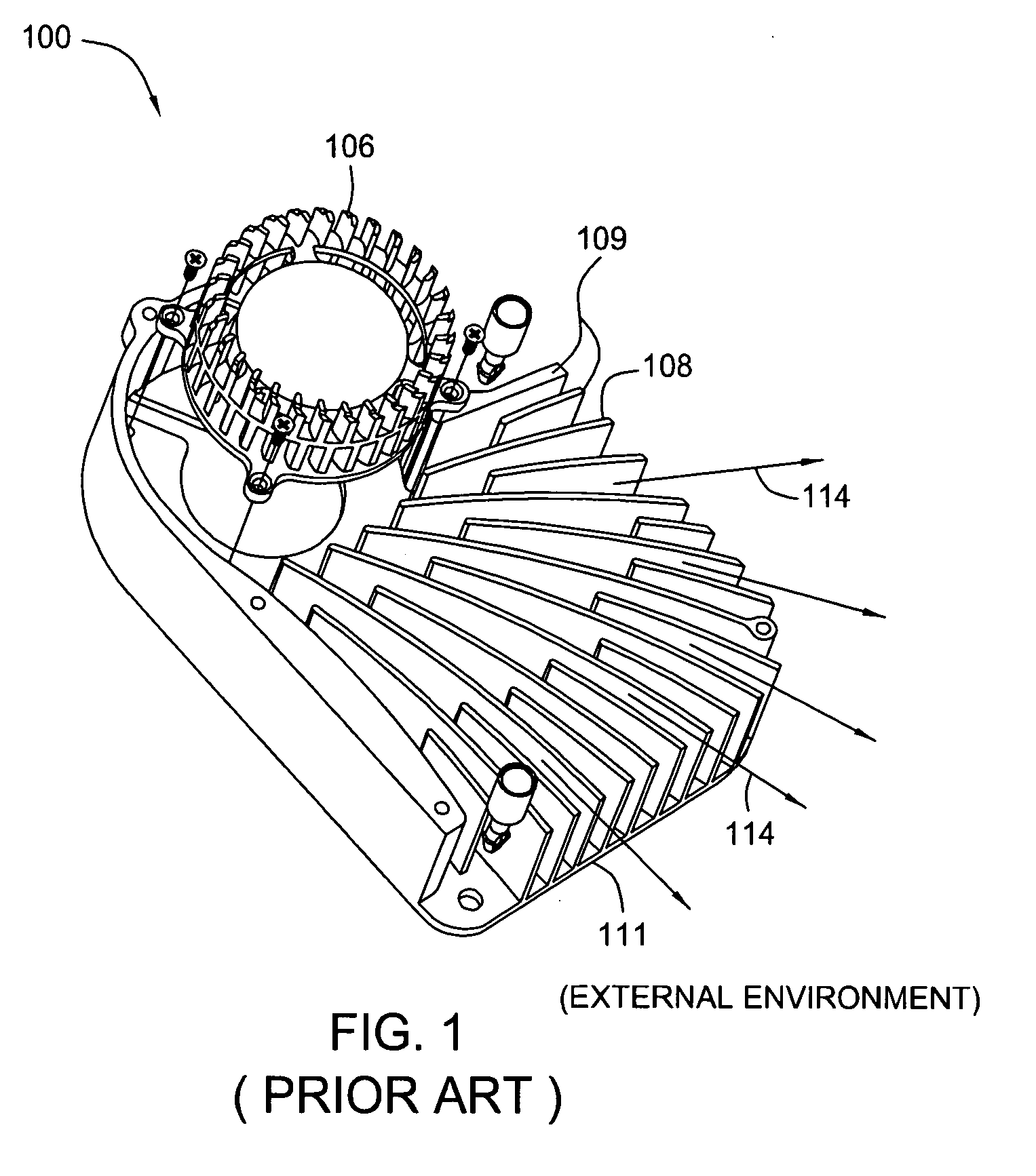Cooling system for computer hardware
- Summary
- Abstract
- Description
- Claims
- Application Information
AI Technical Summary
Benefits of technology
Problems solved by technology
Method used
Image
Examples
Embodiment Construction
)
[0019] All references to directions in describing parts, such as top and bottom are for convenience and not meant to limit embodiments of the invention in any way.
[0020] FIGS. 3A-I are various views of a cooling system 300, or components thereof, used to cool a heat-generating electronic device, according to one embodiment of the present invention. A shroud 305 of the cooling system has been omitted from FIGS. 3A and 3D-3F for the sake of illustration. Referring to FIG. 3B, as shown, cooling system 300 is configured to be thermally and structurally coupled to a printed circuit board (PCB), such as the graphics card 320 or graphics card 202 of FIG. 2. Mounted on a top side, the graphics card 320 includes GPU 345 and other components, such as memory units 347a-d. The graphics card 320 may also include memory units (not shown) on a bottom side. Preferably, the graphics card 320 is configured to connect to a personal computer (see computing device 200 of FIG. 2) via a standard periphe...
PUM
 Login to View More
Login to View More Abstract
Description
Claims
Application Information
 Login to View More
Login to View More - R&D
- Intellectual Property
- Life Sciences
- Materials
- Tech Scout
- Unparalleled Data Quality
- Higher Quality Content
- 60% Fewer Hallucinations
Browse by: Latest US Patents, China's latest patents, Technical Efficacy Thesaurus, Application Domain, Technology Topic, Popular Technical Reports.
© 2025 PatSnap. All rights reserved.Legal|Privacy policy|Modern Slavery Act Transparency Statement|Sitemap|About US| Contact US: help@patsnap.com



